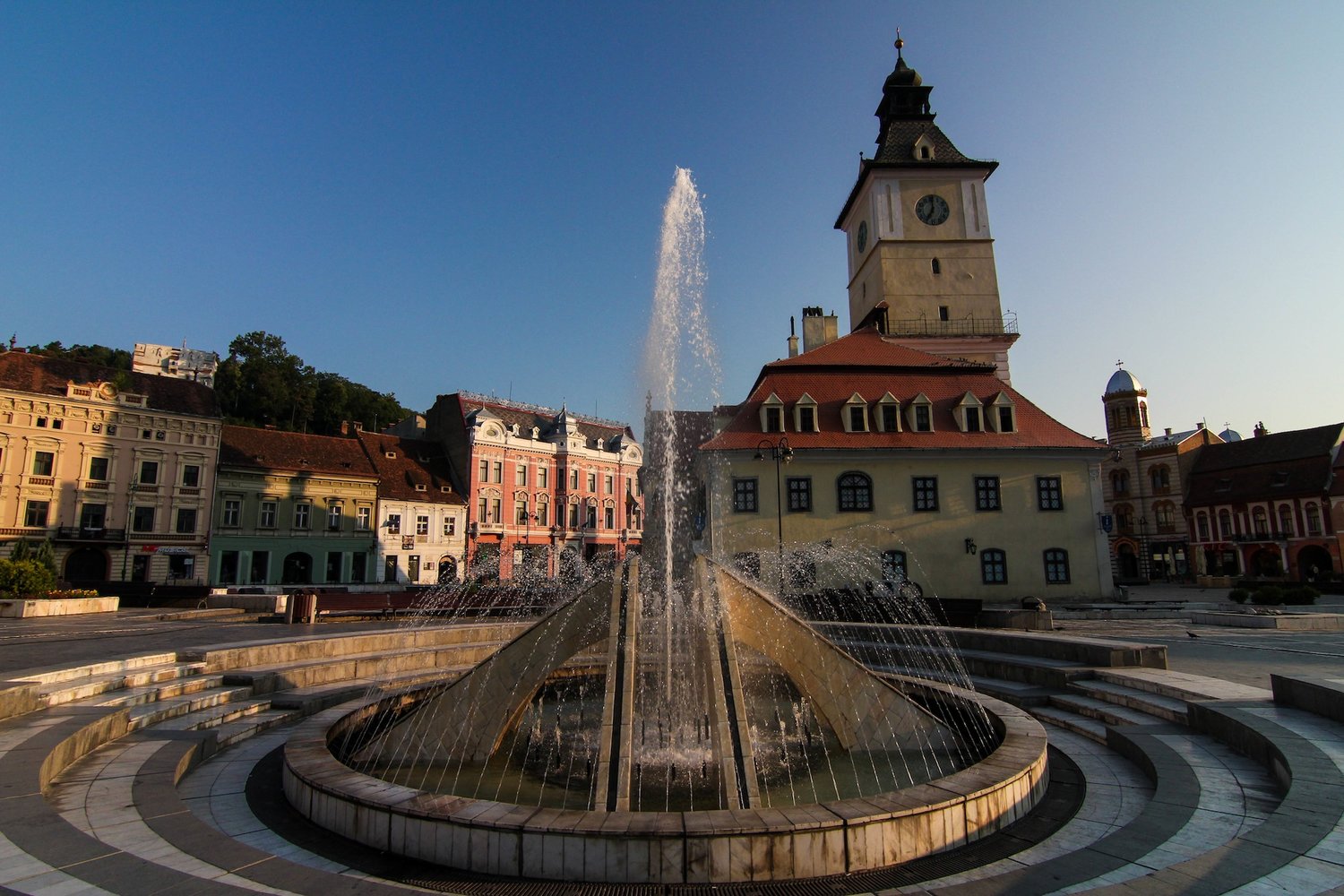VISITING THE BRASOV AREA IN TRANSYLVANIA, ROMANIA

Transylvania feels like the forgotten corner of Europe. Best known as the apparent lair of Count Dracula, some people don't even realise it is a real place. Instead, in the popular foreign imagination it conjures images of spooky jagged peaks, medieval castles and Gothic dungeons. A place where evil goings on happened. Vlad the Impaler - on whom Count Dracula was based - seemed to be a nasty character. He mastered the art of slow, painful ways to dispose of his enemies. The parts about sucking blood, fangs and fearing garlic were later embellishments to the story.
In reality Transylvania isn't nearly as dark as in the popular imagination. Instead, it is pleasant; the old architecture is unique and almost fairytale cartoonish, the hills attractive, forests deep green and the locals are steeped in regional traditions.
Transylvania sits in the centre of Romania, a plateau almost entirely surrounded by the Carpathian mountains. It is one of the most scenic and interesting places in Eastern Europe.

Transylvania feels like the old world. Crumbling buildings, dusty roads, horse drawn carts, stray dogs and cobbled lanes. Farmers plough the fields using old world technology. Medieval structures and churches dot the landscape. Old trains clunk their way through the green and wildflower meadows.
Tourism is a thing, but it isn't overwhelming. It is slow paced, a little sleepy and low key. Sure, there's no shortage of Dracula knick-knacks and souvenirs, but it's not in your face. In the summer most visitors to these hills seem to be Romanians, escaping the lowland heat.

VISITING BRASOV IN TRANSYLVANIA
Brasov is the main city in the region. It's historic heart is in a narrow valley between several hills and at the base of Tâmpa mountain. Old cobblestone streets branch out from the appealing central square, with it's cafe's, Old Town Hall and the Black Church. The architecture is a mix of gothic, baroque and renaissance with the odd bit of Soviet for good measure. Walk in any direction and you will find something interesting.
In the 13th Century Brasov was founded by the Teutonic Knights. Subsequently, Saxon traders became wealthy and powerful due to it's location at the crossroads of old trade routes between the Ottoman Empire and Western Europe. They constructed the medieval city that we see today.
Aside from wandering the streets, riding the cablecar up the Tâmpa mountain gets you a good view. It's up beside the large white "Brasov" sign that overlooking the town. You have to fight your way through a horde of selfie takers to enjoy in the vista. But it's worth it. Returning, it's a nice - although steep - walk back down the hill through the forest into town.
 Next to the square, the Gothic style Biserica Neagră was built by the Brasov German community starting in the 14th century. It's alternate name "The Black Church" comes from the 1689 fire that charred the building. Inside is a museum and a beautiful collection of old turkish rugs. There is also a mechanical organ that is the biggest still functioning organ in the south-eastern Europe.
Next to the square, the Gothic style Biserica Neagră was built by the Brasov German community starting in the 14th century. It's alternate name "The Black Church" comes from the 1689 fire that charred the building. Inside is a museum and a beautiful collection of old turkish rugs. There is also a mechanical organ that is the biggest still functioning organ in the south-eastern Europe.
Other things to do include visiting the Black and White towers, the Old Town Hall building in the square (Casa Sfatului - pictured below) and squeezing through the narrowest street in Romania.

Sinaia and Peleș Castle
Sinaia is a small town on the main train line between Brasov and Bucharest. It sits in a narrow valley alongside the Prahova River, just east of the Bucegi Mountains. Although the main street is a bit pot-holed and there seems to be a lot of stray dogs, the town is a local tourist centre. There is good downhill skiing around here. Most of the houses are spread across the hillside, and some appear to be empty or abandoned.

The main attraction in Sinaia is the Peleș Castle (pictured below). An ornate and grand Neo-Renaissance structure built between 1873-1914. Nearby in the same lavish grounds is the slightly smaller Pelișor Castle. These were first commissioned by King Carol I of Romania and took many years to build. During Communism and the Ceaușescu years the castle was closed down and unused.
The castle is now open to the public, but you must take a guided tour and there is an extra fee for photography. Inside the building you can wander through the various halls, suites and armouries.

Sighisoara
Built by Transyalvanian Saxons, Sighisoara is a compact fortified medieval town. Due to a perfectly preserved historic old town, it has been designated a UNESCO World Heritage site. Here you will find narrow cobbled and winding streets, red tiled roofs, turrets and hilltop churches. It was also the birthplace of Vlad Ţepeş, famous and revered in Romania for defending the country against the Turks, and famous elsewhere as the basis for Count Dracula - or as he was known to his enemies - Vlad the Impaler.

